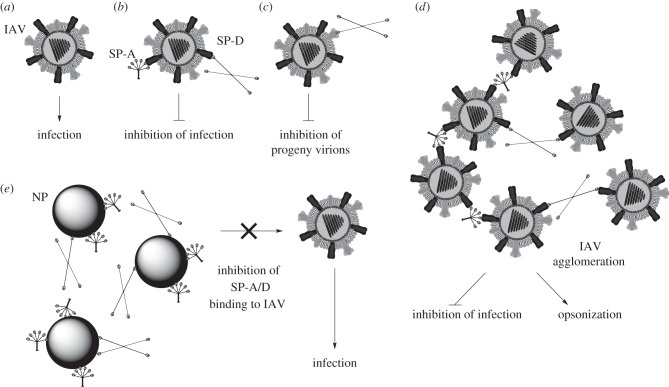Figure 1.
Hypothesis of nanoparticle (NP) sequestration of SP-A and SP-D enhancing IAV infection. (a) Influenza A virus (IAV) initiates infection through the binding of the surface glycoprotein haemagglutinin (HA) to sialic acid containing receptors on the host cell. (b) Surfactant protein A (SP-A) and SP-D bind to HA and prevent its interaction with sialic acid [20–23]. (c) SP-D binds neuraminidase on IAV surface and prevents the release of progeny virions from the host cell following replication [23,24]. (d) SP-A and SP-D act to agglomerate IAV which directly inhibits infection and also enhances the opsonization of IAV by professional phagocytes such as macrophages [25–27]. (e) It is hypothesized that the interaction of SP-A and SP-D with NPs in the alveolar space will reduce their interaction with and neutralization of influenza virus, and thereby enhance susceptibility to infection.

